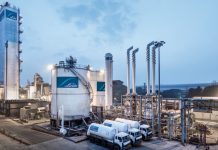Articles covered in this issue:
Cleaner Environment through Ion Exchange Resins
Lanxess Business Unit – Liquid Purification Technologies
Waste water is produced from various chemical manufacturing processes which can contain
chemicals in various combinations and concentrations. This article describes, with the help of case studies, the successful use of ion-exchanger systems for treatment of waste water in
different industries.
Advances in Membrane and ion-exchange processes driving manufacture of value added chemicals from biomass employing optimized biorefinery
Dr Umesh Ingle, Dr Sasisankar Padmanabhan, Dr Pramod Kumbhar, Praj Matrix R&D Centre (Praj Industries Ltd)
Separation of needed chemicals is a challenge in bioprocesses and employing a combination of membranes and chromatographic separations has addressed this challenge to a great extent as described in the article.
Indigenous Technology for Amorphous Boron Powder (ABP): A strategic material having versatile applications
A K Nandi, Dr R K Pandey, HEMRL, Pune.
Elemental boron is of strategic importance due to its applications in critical defence systems. It is also finding increasing civilian applications. A metallothermic reduction process for the production of boron developed by HEMRL is briefly described.
Seawater Desalination Processes & Energy Consumption comparison
Raghava Chari, Industry Consultant
Fresh water supplies today are becoming increasingly scarce for requirements in industry, agriculture and for household needs. The sea is an abundant source of water. Many conventional desalination processes are not viable as compared to the use of membranes,
reverse osmosis etc in the article.
Removal of Black Powder and Other Contaminants in LPG/LMG Furnace Feeds
Ramraj Venkatadri, Pall, USA, Mark Brayden, The Dow Chemical Company
Many separation technologies are employed for removal of black powder, which is a corrosion product widely prevalent in pipelines that transport natural gas and hydrocarbon feed stocks. This paper discusses separation techniques.































